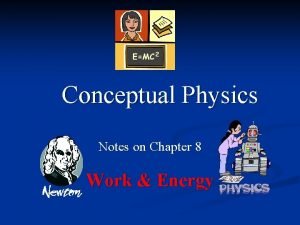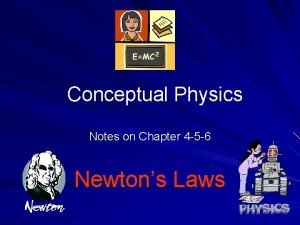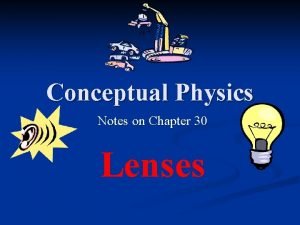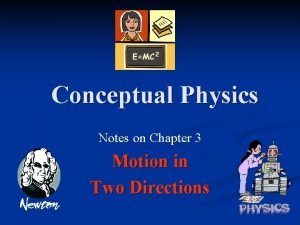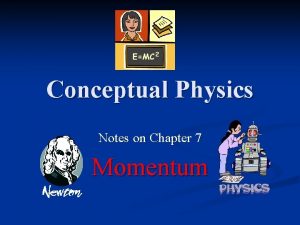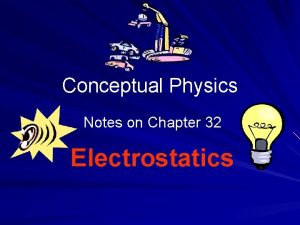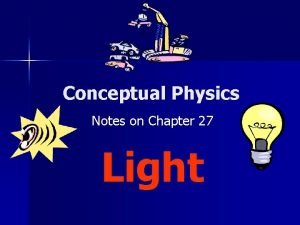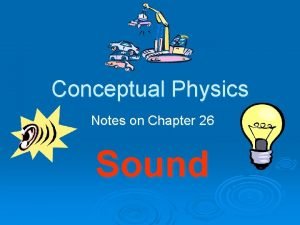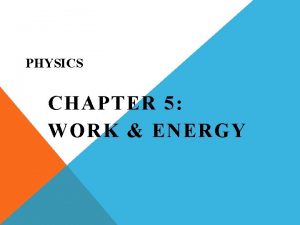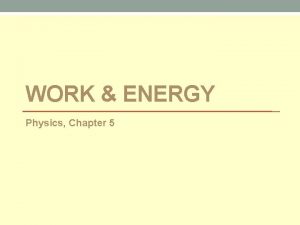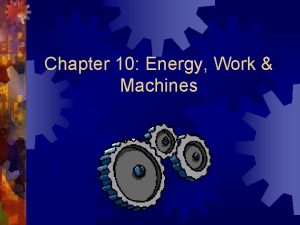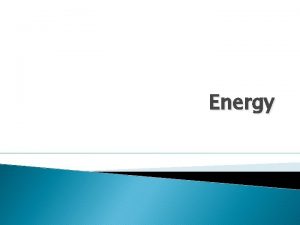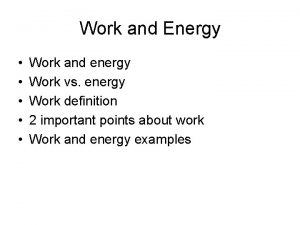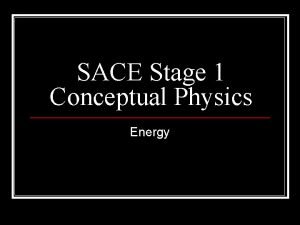Conceptual Physics Notes on Chapter 8 Work Energy











- Slides: 11

Conceptual Physics Notes on Chapter 8 Work & Energy

Work & Energy Work is defined as Force x distance W = Fd Work is done in lifting a book one meter. Twice as much work is done in lifting the same book two meters.

Work & Energy NOTE: No work is done in sliding a book across a table. The book has gained NO ENERGY.

Work & Energy How fast I do work is known as Power is defined as work done / time interval P = W / t

Work & Energy UNITS: Force (F) = Newton Distance (d) = Meters Work = N*m or Joule (J) Time (t) = Seconds (s) Power (P) = J/s or Watt (W) (NOTE: One horsepower (hp) is equal to. 75 k. W or 7500 W)

Work & Energy Work = Δ Energy Fd = Δ E (Energy) This is known as Mechanical Energy

Work & Energy Mechanical Energy is energy of position or energy of movement. Energy of position is Potential (PE) = weight * height PE = mgh Energy of movement is Kinetic (KE) = ½ mass * speed 2 KE = ½ m*v 2

Work & Energy Conservation of Energy “Energy cannot be created or destroyed. It can be transformed from one form into another, but the total amount of energy never changes”

Work & Energy of position changes to energy of movement or energy of movement to energy of position.

Work & Energy MACHINES: A machine is a device used to multiply forces or to change the direction of forces. Examples are : pulley’s and lever’s How efficient a machine works is defined as: Work output / Work input Actual Advantage / Theoretical Advantage

Work & Energy PROBLEMS What is the work done in lifting a 100 kg block a height of 7 m? A 40 kg boy runs up stairs to a floor 5 m high in 7 seconds. What is his power output?
 Work energy theorem
Work energy theorem Conceptual physics notes
Conceptual physics notes Conceptual physics chapter 4
Conceptual physics chapter 4 Conceptual physics chapter 30 lenses pdf
Conceptual physics chapter 30 lenses pdf Physics chapter 3 notes
Physics chapter 3 notes Chapter 4 work and energy section 1 work and machines
Chapter 4 work and energy section 1 work and machines Conceptual physics momentum
Conceptual physics momentum Conceptual physics chapter 35 electric circuits
Conceptual physics chapter 35 electric circuits Chapter 33 conceptual physics
Chapter 33 conceptual physics Chapter 32 conceptual physics
Chapter 32 conceptual physics Chapter 27 light
Chapter 27 light Conceptual physics chapter 26
Conceptual physics chapter 26

